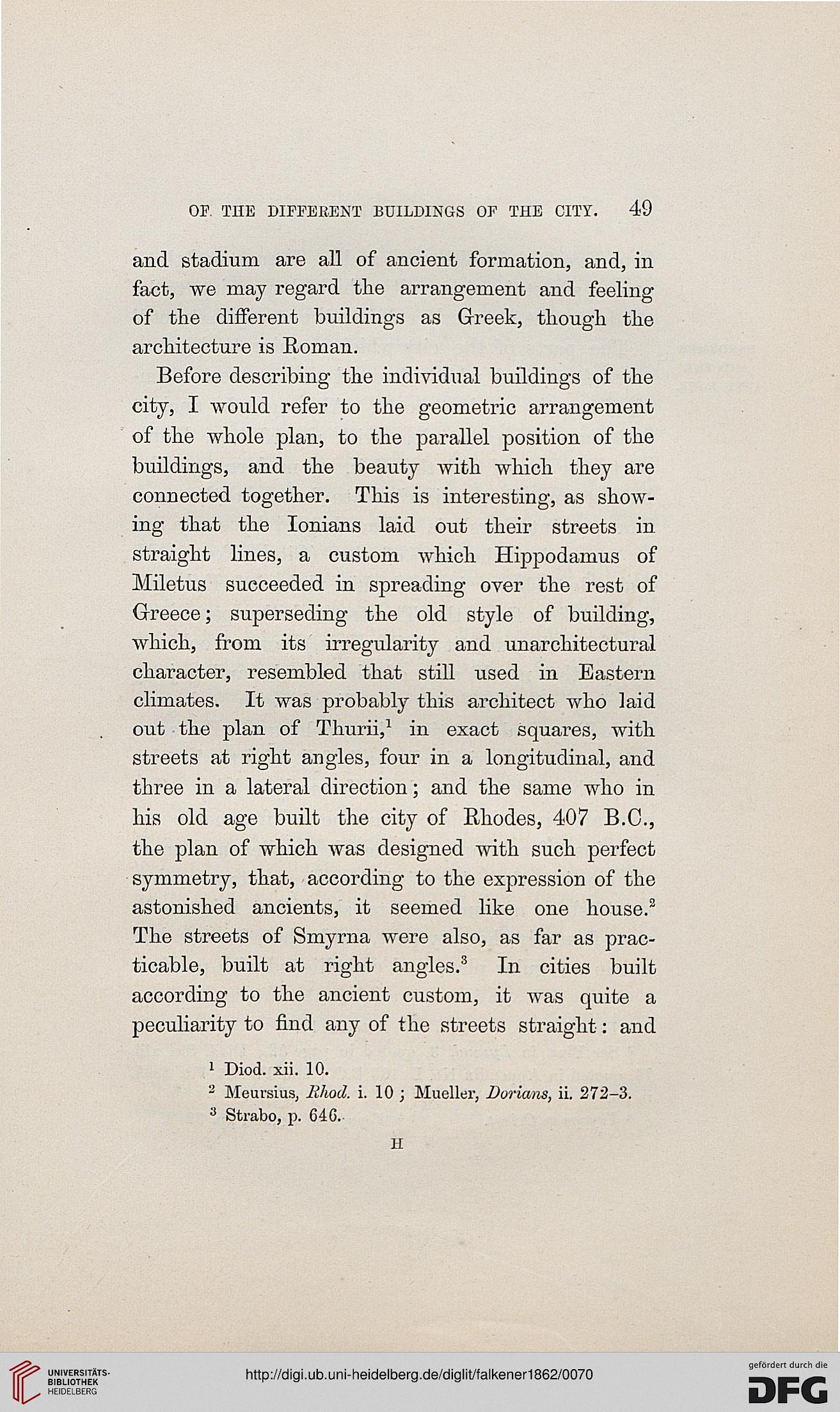OF TIIE DIFFERENT BUILDINGS OF THE CITY. 49
and stadium are all of ancient formation, and, in
fact, we may regard the arrangement and feeling
of the different buildings as Greek, though the
architecture is Roman.
Before describing the individual buildings of the
city, I would refer to the geometric arrangement
of the whole plan, to the parallel position of the
buildings, and the beauty with which they are
connected together. This is interesting, as show-
ing that the Ionians laid out their streets in
straight lines, a custom which Hippodamus of
Miletus succeeded in spreading over the rest of
Greece; superseding the old style of building,
which, from its irregularity and unarchitectural
character, resembled that still used in Eastern
climates. It was probably this architect who laid
out the plan of Thurii,1 in exact squares, with
streets at right angles, four in a longitudinal, and
three in a lateral direction; and the same who in
his old age built the city of Rhodes, 407 B.C.,
the plan of which was designed with such perfect
symmetry, that, according to the expression of the
astonished ancients, it seemed like one house.3
The streets of Smyrna were also, as far as prac-
ticable, built at right angles.3 In cities built
according to the ancient custom, it was quite a
peculiarity to find any of the streets straight: and
1 Diod. xii. 10.
2 Meursius, liliod. i. 10 ; Mueller, Dorians, ii. 272-3.
a Strabo, p. GAG.
H
and stadium are all of ancient formation, and, in
fact, we may regard the arrangement and feeling
of the different buildings as Greek, though the
architecture is Roman.
Before describing the individual buildings of the
city, I would refer to the geometric arrangement
of the whole plan, to the parallel position of the
buildings, and the beauty with which they are
connected together. This is interesting, as show-
ing that the Ionians laid out their streets in
straight lines, a custom which Hippodamus of
Miletus succeeded in spreading over the rest of
Greece; superseding the old style of building,
which, from its irregularity and unarchitectural
character, resembled that still used in Eastern
climates. It was probably this architect who laid
out the plan of Thurii,1 in exact squares, with
streets at right angles, four in a longitudinal, and
three in a lateral direction; and the same who in
his old age built the city of Rhodes, 407 B.C.,
the plan of which was designed with such perfect
symmetry, that, according to the expression of the
astonished ancients, it seemed like one house.3
The streets of Smyrna were also, as far as prac-
ticable, built at right angles.3 In cities built
according to the ancient custom, it was quite a
peculiarity to find any of the streets straight: and
1 Diod. xii. 10.
2 Meursius, liliod. i. 10 ; Mueller, Dorians, ii. 272-3.
a Strabo, p. GAG.
H




